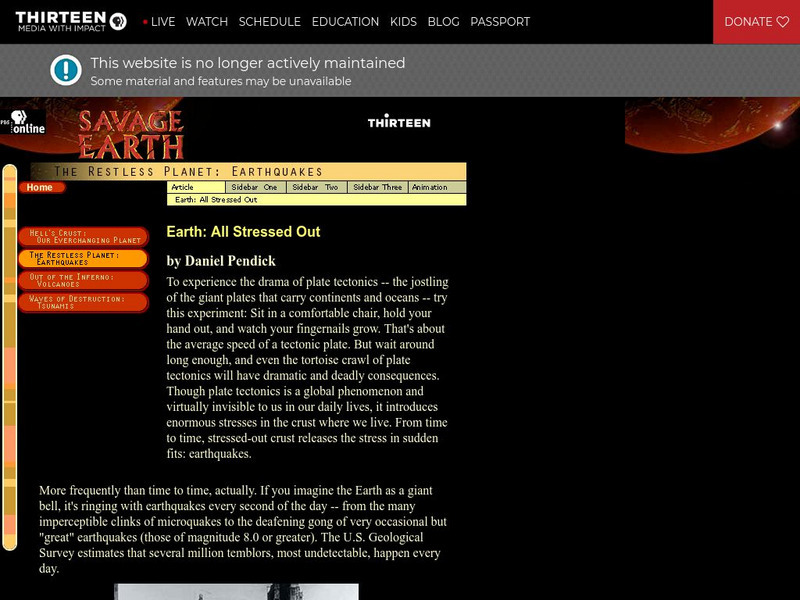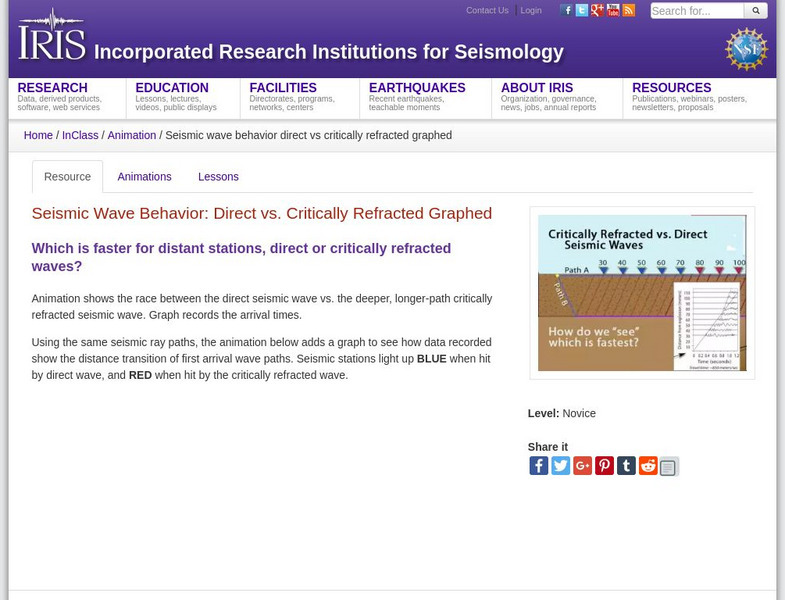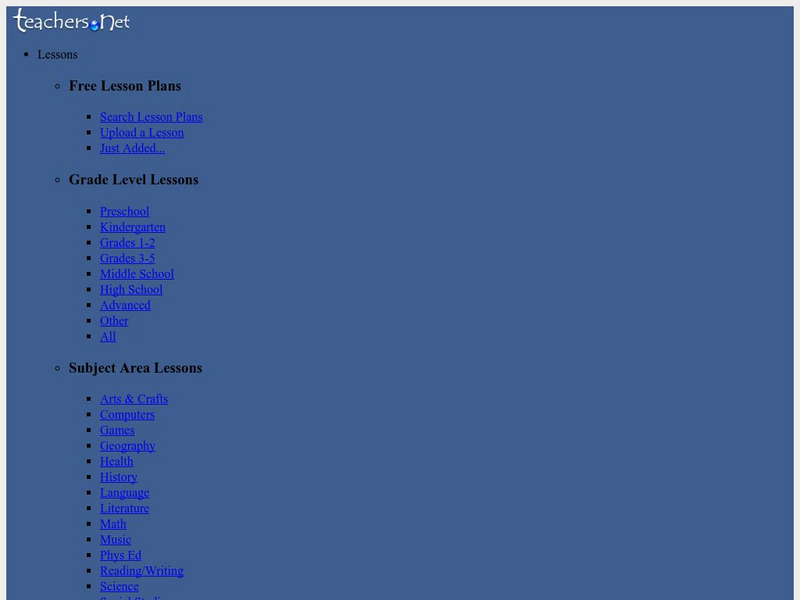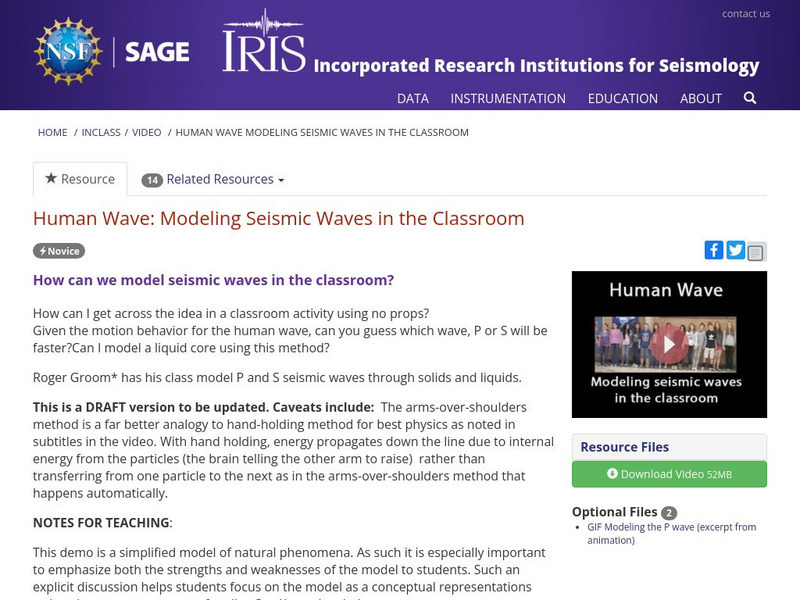Other
Pacific Tsunami Museum: Home Page
This site from the Pacific Tsunami Museum provides a very extensive FAQ sheet that answers many questions about tsunamis, a tsunami picture of the month, and additional links to related topics.
NOAA
Noaa: International Tsunami Information Center: Tsunami, the Great Waves
National Oceanic and Atmospheric Administration defines a tsunami and links to related pages about what causes tsunamis and how lives can be saved from their devastation.
PBS
Wnet: Thirteen: The Earth at Work
This site from PBS provides a description of the mechanisms behind the plate movements, types of movements, and the resulting earthquakes, faults, and images and animations of several of the topics presented.
Oswego City School District
Regents Exam Prep Center: Earth's Interior
A basic overview of the earth's mantle, crust, inner core, and outer core. Also discusses how earthquake waves travel through the Earth.
PBS
Wnet: Thirteen: Savage Earth: The Restless Planet Earthquakes
Discussion of liquefaction and landslides which are two of the many effects of earthquakes.
Michigan Technological University
Up Seis: What Should I Do Before, During, and After an Earthquake?
Tips for what to do for before, during and after an earthquake.
Other
Eastern Oregon University: Every Place Has Its Faults
Site discusses the four basic types of earthquake faults and shows what happens through animations. Offers links to earthquake data and information.
Incorporated Research Institutions for Seismology
Iris: Seismic Tomography [Pdf]
Learn how seismic tomography imaging helps scientists understand the formation of the Earth's interior.
Incorporated Research Institutions for Seismology
Iris: Seismic Wave Behavior: Direct vs. Critically Refracted Graphed
Examine the behavior of seismic waves. This graph illustrates direct and critically refracted waves.
NASA
Nasa Earth Observatory: Putting Earthquakes in Their Place
Discover the location of faults by viewing a schematic Global Tectonic Activity Map. View the location of different types of faults, active spreading centers and volcanoes
CommonLit
Common Lit: Reports From the Ruins of the San Francisco Earthquake of 1906
A learning module that begins with "Reports from the Ruins of the San Francisco Earthquake of 1906," accompanied by guided reading questions, assessment questions, and discussion questions. The text can be printed as a PDF or assigned...
Other
University of Wisconsin Green Bay: Faults and Earthquakes
This site is primarily set up as an outline and is loaded with graphs, maps, and images. It covers a variety of earthquake-related topics, such as what causes earthquakes, fault lines and structures, seismology, a historical look at...
Science Struck
Science Struck: A Complete List of Natural Disasters
Explains what a natural disaster is and provides a list of every type along with a short description of each.
CommonLit
Common Lit: Plate Tectonics: Moving and Shaking
A learning module that begins with "Plate Tectonics: Moving and Shaking," accompanied by guided reading questions, assessment questions, and discussion questions. The text can be printed as a PDF or assigned online through free teacher...
Teachers.net
Teachers.net Lesson: Natural Disaster Bloom's Taxonomy
Here is a lengthy activity for student to work on while learning about floods, hurricanes, tornadoes, and earthquakes. Students will enjoy researching these disasters and applying what they have learned to a project.
Exploratorium
Exploratorium: The Faultline/seismic Slinky
A lesson plan for investigating longitudinal waves by use of a Slinky toy. Directions, questions, and applications to seismic waves are provided.
TeachEngineering
Teach Engineering: Earthquake in the Classroom
Students will learn how engineers construct buildings to withstand damage from earthquakes by building their own structure with toothpicks and marshmallows. Students will test how earthquake-proof their buildings are by testing them on...
Other
Abc News: Talking to Kids About the Tsunami Tragedy
How can you begin to talk to your kids about the Tsunami tragedy? This site offers insight on how to deal with this difficult topic.
The Franklin Institute
Franklin Institute Online: Earthforce in the Crust
Learn more about earthquakes as well as plate tectonics. Site offers links to current quakings as well as earthquake science, teacher lessons, interactives, and earthquake history.
Incorporated Research Institutions for Seismology
Iris: J Ama Seis
jAmaSeis facilitates the study of seismological concepts in middle school through introductory undergraduate classrooms. Users can obtain and display seismic data in real-time from either a local instrument or from remote stations.
Incorporated Research Institutions for Seismology
Iris: Human Wave: Modeling Seismic Waves in the Classroom
A demo of how can we model seismic waves in the classroom. [8:27]
Incorporated Research Institutions for Seismology
Iris: Seismic Reflection
A complete lesson on seismic reflection. A video, slide presentation, and practice with solutions are included.
Incorporated Research Institutions for Seismology
Iris: Seismic Events of Special Interest
This fact sheet highlights some of these recent seismic events that are of special interest because they have caused notable geologic changes to our landscape or devastating destruction to our society.
Incorporated Research Institutions for Seismology
Iris: Mysterious Motions Along the Pacific Northwest Coast
In this lab, students investigate mysterious ground motions along the Pacific Northwest Coast.
















